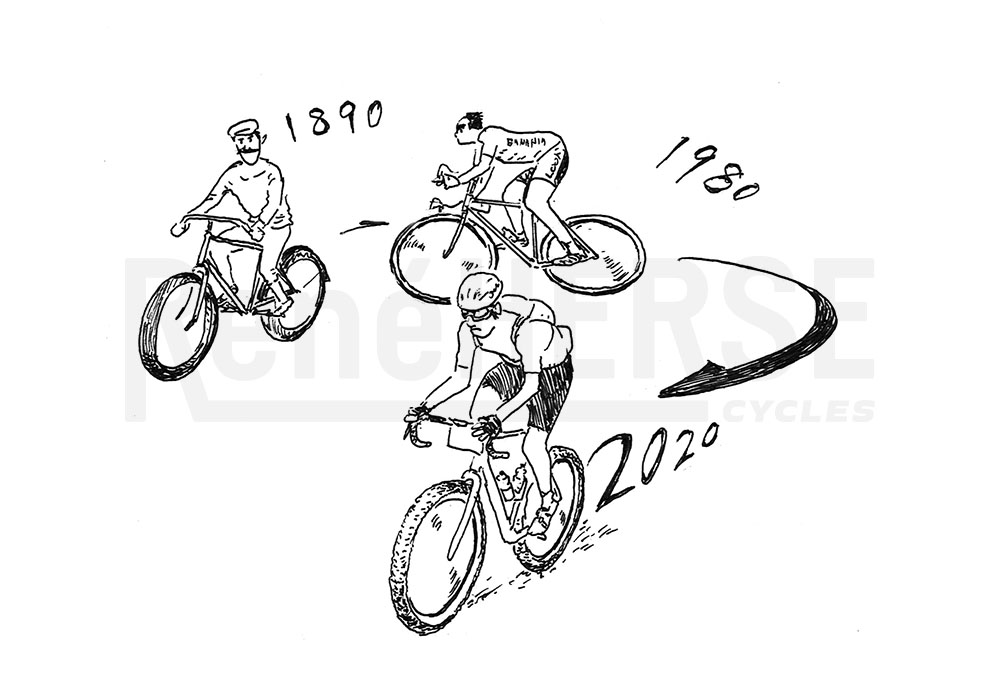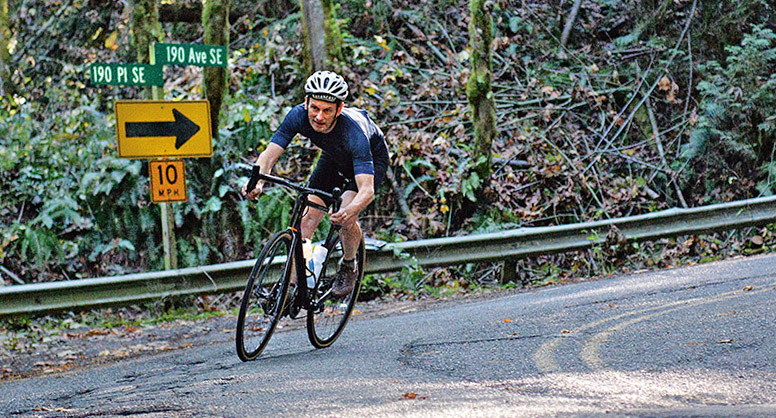Why narrow tires FEEL faster
All our research shows that wide tires roll as fast or faster than narrow tires (if they use the same casing). How come that generations of cyclists believed that narrow tires are faster?
The answer is simple: Narrow tires feel faster. They simulate the sensation of higher speed – without actually going faster.
Here is how this works: When you go faster, you tires hit the irregularities of the road surface in quicker succession. As a result, your bike vibrates at a higher frequency. Every cyclist can feel this:
Higher speed = higher frequency vibration
If you change something on your bike to make it vibrate at higher frequency, you’ll also feel faster – without actually going faster:
More vibration = more sensation of speed
That is what narrow tires do. They are inflated to a higher pressure, so they transmit more small road irregularities. This means that they vibrate at higher frequencies than wider tires. And so narrow tires feel faster.
This has fooled most of us. A few years ago, I was riding with Mark, and I commented on how we were going really fast, as soon as we left his house. He gave me an incredulous look, glanced at his computer (my bike didn’t have one), and said: “We always go at this speed around here.”
Only then did I remember that I had increased the pressure in my 32 mm tires to 7.5 bar (110 psi) a few days earlier for a test. The tires were still inflated to the higher pressure, and my bike felt faster. We stopped, and I let out some air. Now the bike felt ‘normal’ again, but Mark didn’t notice any difference in my speed. I hadn’t been going faster on the harder tires, just feeling faster.

This explains why racers have stuck with narrow tires so long. More than a century ago, the first pneumatic tires were huge. Back then, racers immediately noticed how much faster the air-filled tires rolled compared to the solid rubber they replaced. The old bikes were called ‘boneshakers’ in retrospect, and everybody remembered how slow they were. But within a few decades, racers drifted toward the “pneu crayon” (pencil tire). And racing tires remained narrow for the better part of a century.
This became a self-reinforcing system: Fast bikes ran narrow tires, so there was no market for wide high-performance tires. Wide tires were spec’d with inexpensive casings and puncture-resistant belts – which made them slow. Narrow racing tires were supple and fast. And so it was really true: Wide (touring) tires were slower than narrow (racing) tires.
Once we figured out that wide tires can be as fast or faster than narrow ones, it made sense to make wide high-performance tires again. And so we’ve come full circle, riding wide tires on all roads, because they are more comfortable and offer more grip. (They also allow us to explore bumpy backroads and long-forgotten gravel mountain passes.)
We still need to overcome the false sensation of speed associate with narrow tires. These days, most of us aren’t so easily fooled any longer. When we ride tires at high pressures, we notice how much our bikes slow down when we hit patches of rough pavement. On wider tires at lower pressures, we glide right over those rough patches. What we feel when our bikes vibrate and slow down are suspension losses. Once we’re attuned to how much vibrations slow down our bikes, no narrow tire ever will feel faster again!
Of course, that doesn’t mean we all have to ride the wide tires. There are other reasons to ride narrow tires: weight, aerodynamics, and even aesthetics. And yet even today’s ‘narrow’ tires are much wider than they used to be. The OPEN MIN.D. racer in the top photo is running 32 mm tires – wider than most bikes for loaded touring not too long ago.
Further reading:
• Are gravel bikes slower than road bikes? A look at all factors that affect a bike’s speed: Tires, aerodynamics, riding position…
• Myths in Cycling 1: Wider tires are slower. Why wide tires are not slower…
• The All-Road Bike Revolution. Our book about the science that has revolutionized bikes and how we ride – in a fun and easy-to-read format.



